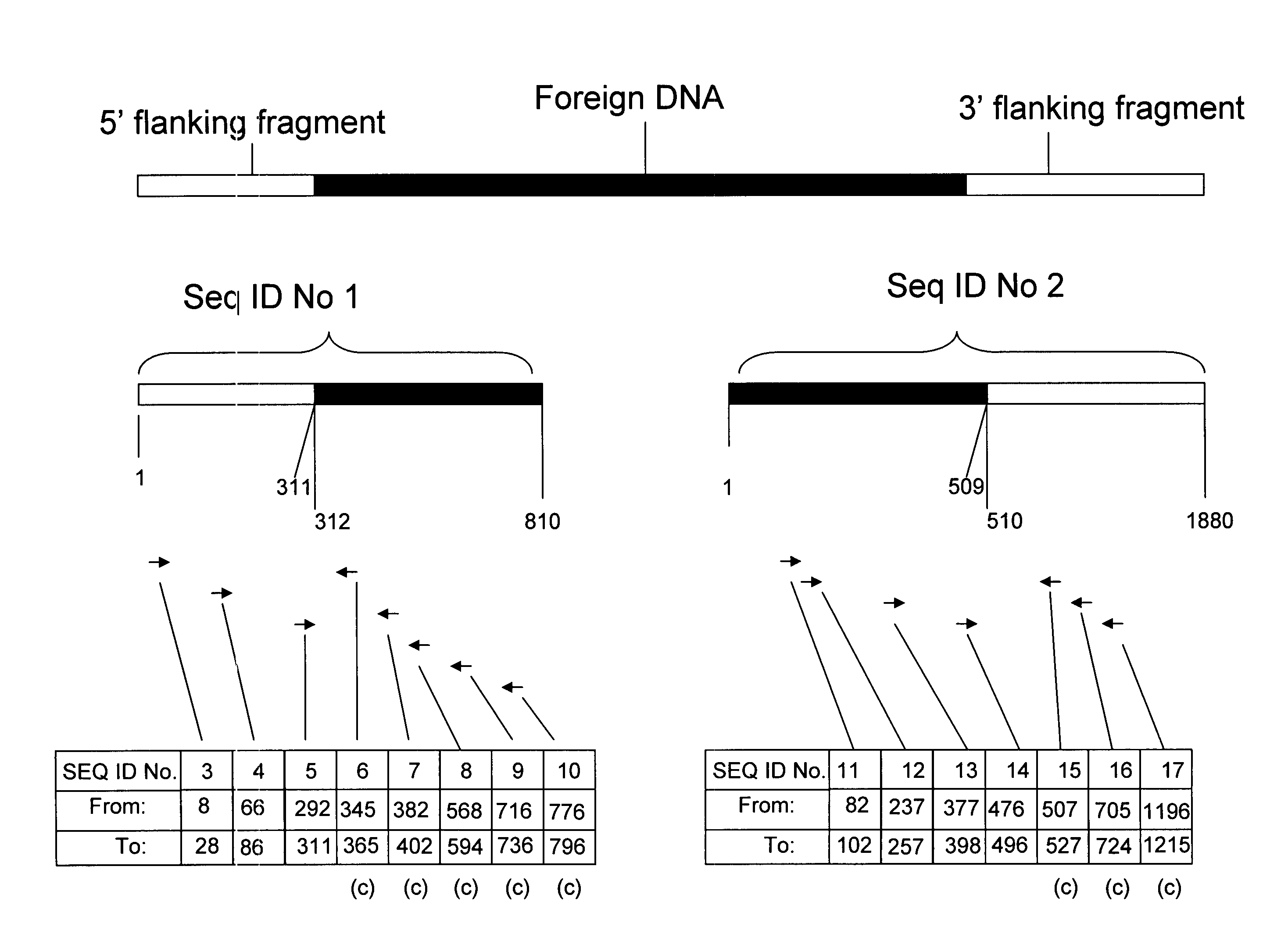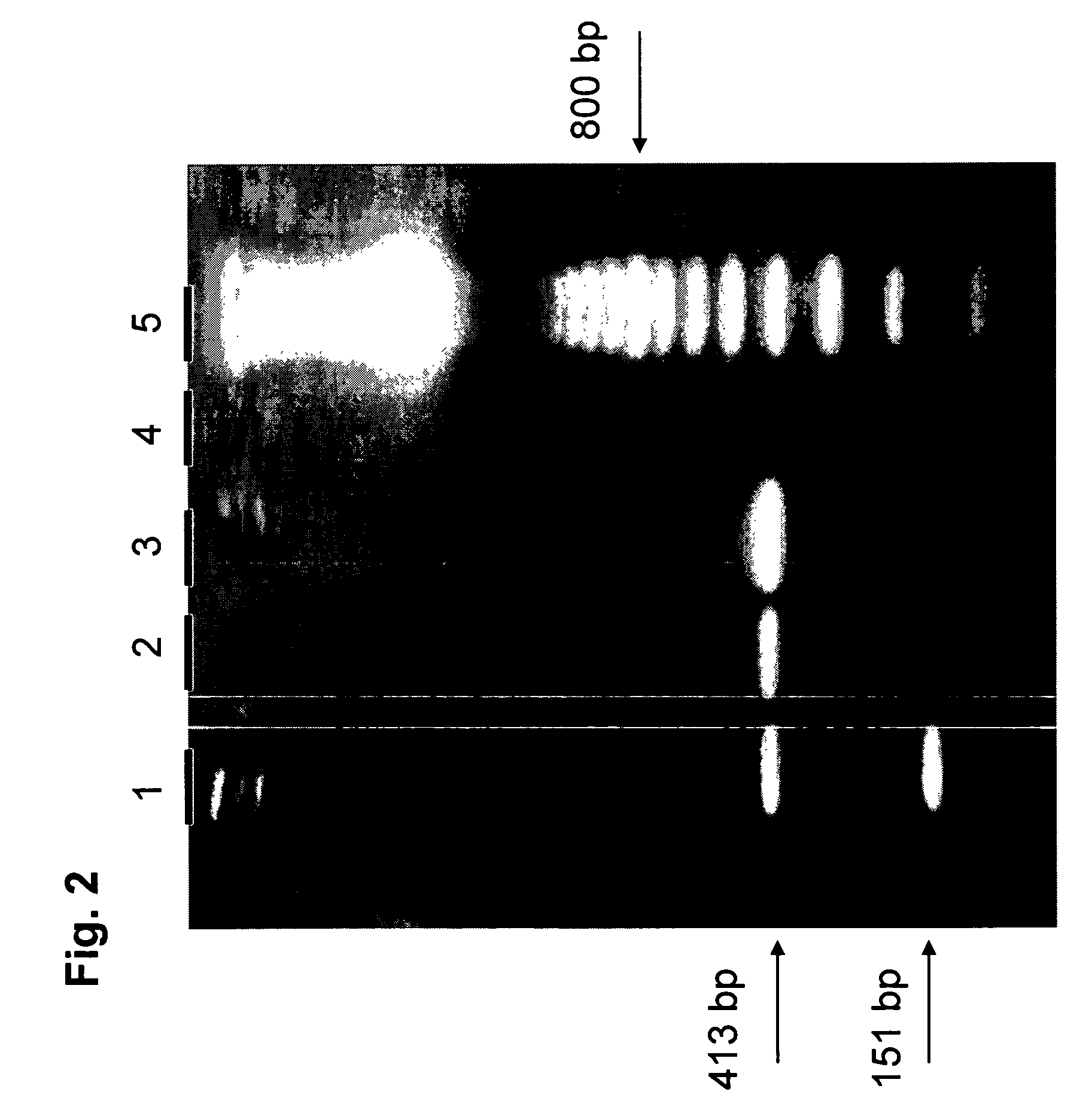Elite event A5547-127 and methods and kits for identifying such event in biological samples
- Summary
- Abstract
- Description
- Claims
- Application Information
AI Technical Summary
Benefits of technology
Problems solved by technology
Method used
Image
Examples
examples
1. Identification of the Flanking Regions of Elite Event A5547-127
[0550]Herbicide-resistant soybean was developed by transformation of soybean with a vector comprising the coding sequence of a pat gene encoding the enzyme phosphinothricin-acetyl-transferase, under the control of the constitutive 35S promoter from Cauliflower Mosaic virus.
[0551]Elite event A5547-127 was selected based on an extensive selection procedure based on good expression and stability of the herbicide resistance gene and its compatibility with optimal agronomic characteristics.
[0552]The sequence of the regions flanking the foreign DNA in the A5547-127 event was determined using the thermal asymmetric interlaced (TAIL-) PCR method described by Liu et al. (1995, Plant J. 8(3):457-463). This method utilizes three nested primers in successive reactions together with a shorter arbitrary degenerate primer so that the relative amplification efficiencies of specific and non-specific products can be thermally controlle...
PUM
| Property | Measurement | Unit |
|---|---|---|
| temperature | aaaaa | aaaaa |
| temperature | aaaaa | aaaaa |
| volume | aaaaa | aaaaa |
Abstract
Description
Claims
Application Information
 Login to View More
Login to View More - R&D
- Intellectual Property
- Life Sciences
- Materials
- Tech Scout
- Unparalleled Data Quality
- Higher Quality Content
- 60% Fewer Hallucinations
Browse by: Latest US Patents, China's latest patents, Technical Efficacy Thesaurus, Application Domain, Technology Topic, Popular Technical Reports.
© 2025 PatSnap. All rights reserved.Legal|Privacy policy|Modern Slavery Act Transparency Statement|Sitemap|About US| Contact US: help@patsnap.com



